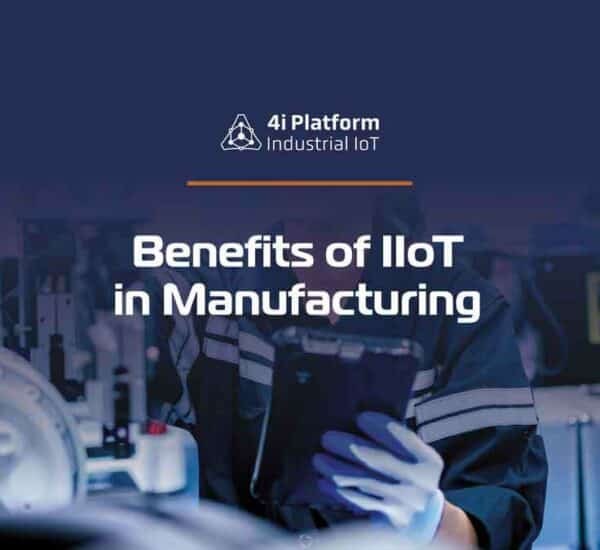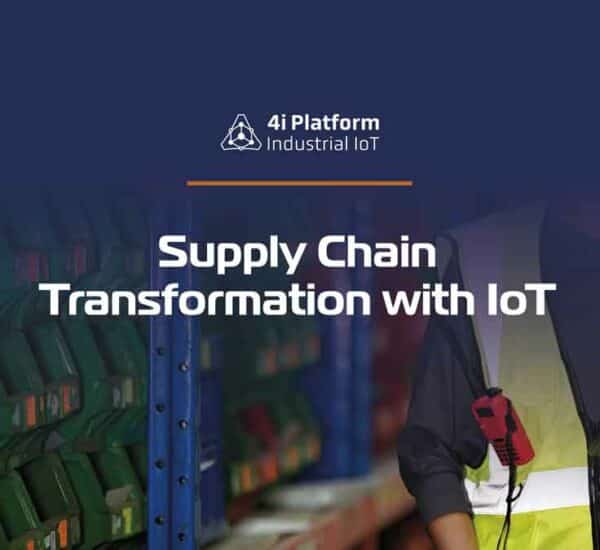Connected technology is transitioning from our homes and offices and into our factories, warehouses and transportation hubs; this is now known as Industrial IoT (IIoT).
Industry 4.0
The Industrial IoT is the use of smart equipment to help better manufacturing of industrial processes. Also known as the industrial internet or Industry 4.0, IIoT utilizes the power of smart machines and real-time analytics to take advantage of the data that not so aware machines have produced in industrial settings for years.
- The Industrial Internet of Things has resulted in automation that has already led to a 30% boost in productivity and the adoption of flexible production techniques.
- Data driven maintenance is reducing the cost even further by saving more than 12% on scheduled repairs and bringing breakdowns down by nearly 70%.
For example, the equipment’s operating parameters are monitored daily by staff or automatically by sensors. Next, it is analyzed and used to help figure out the status of the equipment and forecast future performance or possible failures.
Some of the industry adopters of IIoT include:
- Manufacturing
- Logistics and transportation
- Energy and power production
- Oil and gas
- Agriculture
The manufacturing industry has seen the most investments by far and is the main factor in the introduction of IIoT. Manufacturers are using IoT to turn their warehouses into smart factories.
A smart factory is a manufacturing or production facility that is highly digitized, a place where the systems are interconnected with each other, and data is seamlessly exchanged about each aspect of production in real-time. This communication flows smoothly and effortlessly between the different systems and the complete production process happens automatically without any human interference.
In today’s market, global manufacturers are investing close to $70 billion in IoT solutions. By 2021, the Industrial IoT market is expected to reach over $123 billion.
Such rapid market growth predictions make it clear and how promising these new applications have become. Logistics and delivery companies have already experienced the array of advantages from conventional IoT, but there are additional uses and benefits of Industrial IoT in 5 drastic areas:
Benefits of Industrial IoT in Five Areas
Predictive Maintenance (PdM)
Predictive maintenance for industry 4.0 is a type of way of preventing asset failure by analyzing production data to aid in identifying patterns and predict issues, prior to them occurring.
Organizations are implementing predictive maintenance analytics in a variety of ways, from targeted specific solutions for a single machine part, to factory-wide deployments for expanding OEE throughout the production line.
Condition-based Maintenance
Using IIoT routers with manufacturing equipment gives way for condition-based maintenance alerts. These sensors record temperature, humidity and other atmospheric conditions in the working environment, the composition of materials used, and the impact that shipping container/vehicle environmental conditions have had or may potentially have on the product. All this information is essential to quality control.
Equipment can withhold damage over time, so having IoT sensors that can actively monitor the temperature, vibrations and other factors that could be causing problematic operating conditions is beneficial in facility management.
By establishing this type of conditional awareness of machinery conditions, manufacturers can:
- Easily lower costs
- Increase operational efficiency
- Conserve energy
- And reduce machine downtime
Real-Time Data
IIoT solutions can help bring to light real-time availability of supply chain data. They make it simple to track products and supplies, as well as spot slowdowns and inefficiencies. By connecting plants to suppliers, all parties involved within the supply chain can keep track of material flow and manufacturing cycle times.
Furthermore, these solutions can also track operational data to original equipment manufacturers and field engineers which gives operation managers an opportunity to regulate factory units remotely and take advantage of process automation and optimization.
As a result, this is why these solutions make streamlining everyday workflow an effortless thing.
Error Prevention
IoT applications help lower and often even prevent errors in inventory management and production flow. Software allows companies to monitor events across the supply chain and track inventory around the globe.
Users receive notifications of important changes from the set plan as well as updates. This enables visibility across many channels into inventories and provides managers with realistic measures and estimates for materials.
The processes in production lines can also be monitored using IoT in almost real-time. It can advise on adjustments in operations for better management of operational cost and even point out lags in production. These solutions prevent slowdowns and decrease costs by getting rid of waste and unneeded work.
Enhanced Safety
The Industrial Internet of Things gives Big Data analysis an opportunity to be even more effective. This means Key Performance Indicators (KPIs) of health and safety can be monitored to assure better working conditions.
Summary: the Benefits of Industrial IoT
The steady climb of industrial IoT is bringing the factory of the future into reality.
Materials handling, manufacturing, product distribution, and supply chain management will all continue to be automated in the years to come.
By integrating connected systems, devices, and sensors into business processes, organizations are able to better existing operations, as well as develop more effective business models.
In the future, experts recommend that Industrial IoT will enhance production levels even further and become the main pillar behind increased innovation.
Over time, the workforce itself will also be transformed as a part of the extensive automation process through the collaboration of producers and suppliers.





